November 1, 2017
Luther's Small Catechism and Explanation
Review by Loiell Dyrud
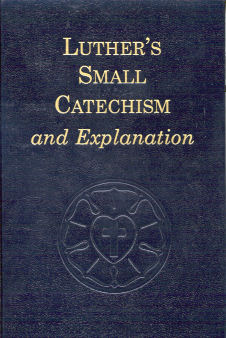
As we focus on the 500th Anniversary of the Reformation and Martin Luther’s enormous impact, we should not overlook the importance of his Small Catechism. Luther is reported to have once commented that if he were to be remembered after his death for anything he had written it would be for his Small Catechism and The Bondage of the Will. That coming from one of the most prolific writers in the history of the Protestant Reformation testifies to the importance Luther placed on his Small Catechism.
What makes the Small Catechism such a cornerstone of Lutheran writing is its simplicity and clarity. Originally meant as a text to guide parents in teaching their children the principles of Christianity within a Lutheran framework, this short work has been used as a confirmation text by Lutheran pastors ever thereafter.
What makes the AFLC’s Luther’s Small Catechism and Explanation so uniquely different from most Lutheran catechisms today is the inclusion of the “Explanation,” that portion that amplifies the original Small Catechism through an additional series of 388 questions and answers.
This “Explanation,” often referred to as “Pontoppidan’s Explanation,” has a long history. In 1737, Erik Pontoppidan, chaplain to the King of Denmark, wrote an explanation attached to “Luther’s Small Catechism” called “Truth Unto Godliness.” His explanation contained 759 questions and answers as an aid for instructing Denmark’s young people in Luther’s catechism.
Because Norway was under Danish rule at the time, Pontoppidan’s work also became the text for teaching Norway’s children. In 1864, the State Church of Norway instructed Harald Ulrich Sverdrup (father of Georg Sverdrup, one of the founders of the Lutheran Free Church in America) to update and condense Pontoppidan’s work. In 1893, Norway’s Department of Church and Education had Sverdrup’s version of Pontoppidan’s Explanation abridged to 388 questions and answers, the length of our catechism today.
“H. U. Sverdrup’s Explanation,” as it was commonly known, became the standard throughout Norway. When Norwegian emigrants crossed the Atlantic, Sverdrup’s “Explanation” accompanied them, becoming an intersynodical catechism used in many Lutheran denominations in this country as well. This was the catechism adopted by the Lutheran Free Church in 1897 and translated into English in 1900.
Though the use of this intersynodical catechism which included the Explanation was discontinued by several mainline Lutheran Church bodies during the twentieth century, the Association of Free Lutheran Congregations (AFLC) has retained this Sverdrup Catechism since its organization in 1962.
In 2007, Luther’s Small Catechism and Explanation was updated without substantial changes to the text, except to replace some of the more archaic words with those more commonly used. For example, “quick” has been changed to “living,” “aught” to “anything,” and “raiment” to “clothing.” More Bible verses have been added in support of the Explanation portion. This edition also includes Luther’s Seal in full color with explanation at the beginning, followed by four attractive, full-colored posters illustrating the Ten Commandments, the Apostles Creed, the Lord’s Prayer, and the Sacraments. Another fine feature is the separation into two distinct parts—Luther’s original Small Catechism is published in the beginning, followed by the Explanation. But what is truly unique about the Explanation portion in this updated edition is that wherever Luther’s original text is included it is shaded in blue to help the reader differentiate between Luther’s original and Pontoppidan’s Explanation.
Furthermore, this attractive hardcover, pocket-sized catechism has Luther’s crest embossed on the cover, making it a handsome addition to any Lutheran’s library. In fact, it would make an excellent text for adults to study in order to re-examine their roots. For as professor of church history at Luther Seminary Walter Sundberg writes in his review in the May 2008 Metro Lutheran: “Perusing the pages of this fine volume, however, I become mindful of the rigor and discipline of old Lutheranism. This small volume would make an excellent gift for the new confirmand. It would also be a valuable and uplifting book for an adult study group.”
Loiell Dyrud
Our Saviour's Lutheran Church
Thief River Falls, MN
Order your copy here: Ambassador Publications Online Store
Also Available:
November 8, 2017
Martin Luther:The Man Who Rediscovered God and Changed the World
Review by Pr. Steve Mundfrom
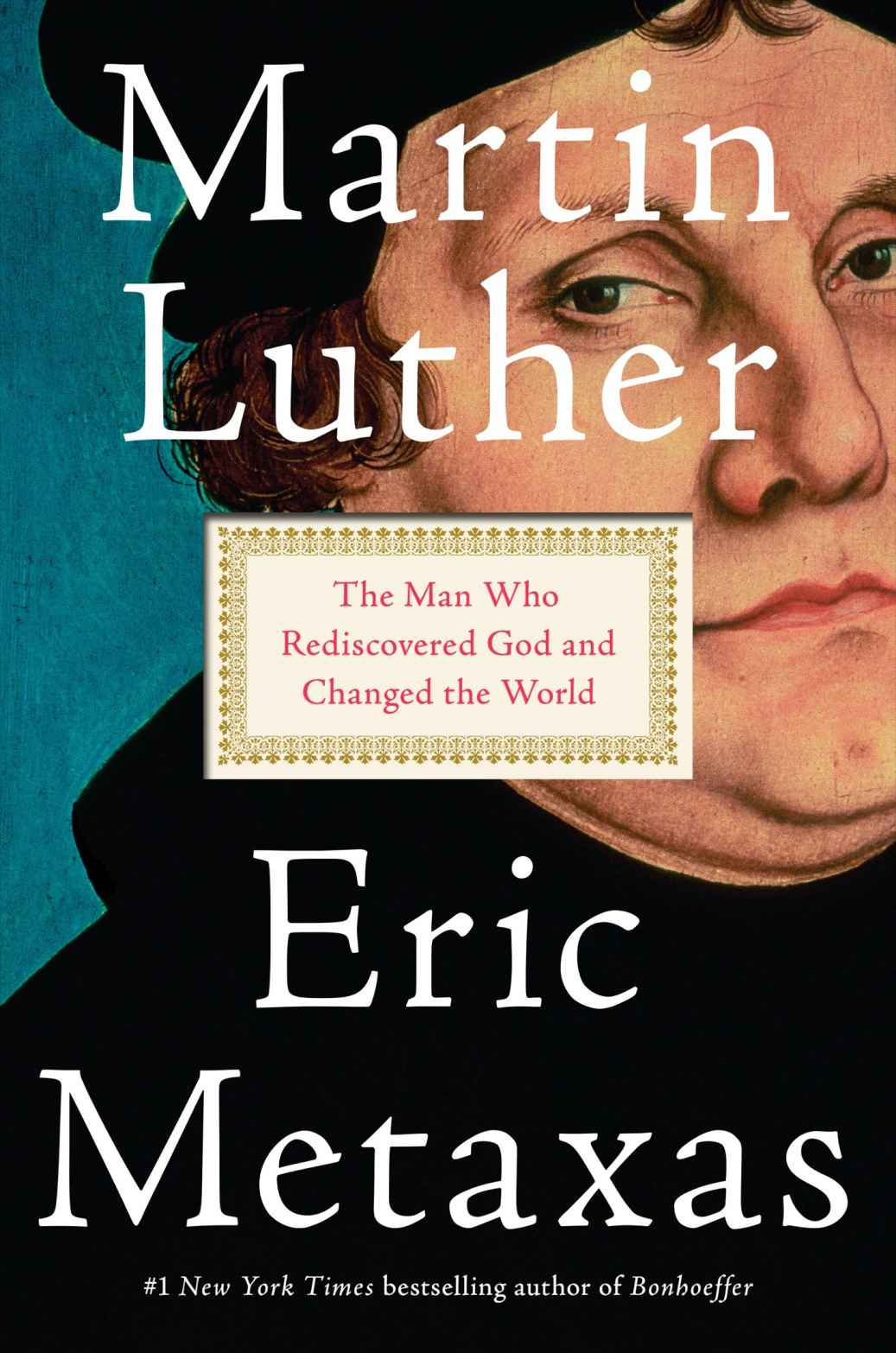
Martin Luther: The Man Who Rediscovered God and Changed the World (Viking, 2017) by Eric Metaxas sets out to make a bold statement about the life of Martin Luther. As the title indicates, Metaxas sees the impact of Luther’s life and theology extending beyond his religious influence and into the larger world—an influence he repeatedly underscores. Eric Metaxas writes as an American evangelical, and his book is notable for the way he makes Luther’s life meaningful and accessible to those readers. At almost 450 pages, it is a fairly detailed biography of the great Reformer, spending its larger share on his early and middle life, and moving more quickly over the later years. I found the book to be both interesting reading and an accurate account of Luther’s life.
Having read many biographies of Luther, I found this one particularly interesting for two reasons. First, Metaxas has great sympathy for almost all of Luther’s theological positions. Many Luther biographies are written by scholars with a modern, even secular, worldview. They almost choke on his confidence in the Word of God, his belief in spirits and demons, and on the depth of his religious experience—often writing about his Anfechtung (Luther’s deep trouble of conscience over his sin) with unbelieving distance. Eric Metaxas’ handling of these is quite refreshing. His own comments affirm without apology or hesitation Luther’s belief in the inerrancy of Scripture and his saving trust in the Christ of the Gospel. There is more here than academic interest in the Reformation. Here is a biography of Luther from one who really seems to get it.
A second point of interest for American readers is the frequent reference to Luther’s influence on our own political history. Metaxas sees Luther’s stand for truth at Worms as a significant step in the development of the Western respect for freedom of conscience. Since Luther, the use of force in religious matters has been steadily waning and the growth of religious freedom has steadily progressed. This clearly lays a foundation for what has become the practice of religious freedom in America. While Luther was never a revolutionary in the political sense, his desire to be judged simply by the Word of God was a revolutionary development that continues to shape world history.
This book has a good mixture of biographical material and explanation of Luther’s thought and teachings. One aspect of Metaxas’ treatment of Luther that I found quite interesting was his appreciation for what he calls Luther’s “incarnational” theology. Luther had no trouble finding spiritual significance in the everyday aspects of life. Jesus was incarnate as God-in-the-flesh in this world to participate fully in its joys and sorrows, its filth and trouble. In so doing, as Luther indeed believed and taught, Christ sanctified our whole existence. From the everyday chores of the home and family, to the sexual union in marriage, to the cultivating of God’s green earth, Luther embraced all of these earthy tasks, and many others, with faith in Christ and confidence that he was serving Christ in all of it. This particular aspect of Luther’s thought is wonderfully helpful since popular Christianity tends to over-spiritualize our lives and focus the Christian life primarily on those things which are overtly spiritual.
If you decide to read this book, let me warn you about two things. First, I don’t think that Metaxas does a good enough job explaining the indulgence controversy over which the Reformation began. He does not make it clear, at least in his early comments, that the practice of indulgences in Luther’s day had the sole purpose of mitigating the temporal (that is, non-eternal) consequences of sin. Medieval Catholic theology limited the value of indulgences to time out of purgatory, not to eternal salvation from sin (which was achieved through baptism). It is true that the popular preachers in Luther’s day often confused the benefits of indulgences, but it was quite clear in the theology of the day. Metaxas could have been clearer on this point. A second warning: Metaxas quotes some of Luther’s more vulgar comments and allows them to be translated into correspondingly vulgar English. This would not be necessary and may be a minor thing to some, but maybe not.
Overall, I would heartily recommend this new biography of Luther as a useful and engaging study of the Father of our Lutheran faith.
Pr. Steve Mundfrom
AFLBS/TS Professor of Systematic Theology
Plymouth, MN
Order your copy here: Ambassador Publications Online Store
Also Available:
November 15, 2017
Martin Luther:The Great Reformer
Review by Pr. Craig Benson
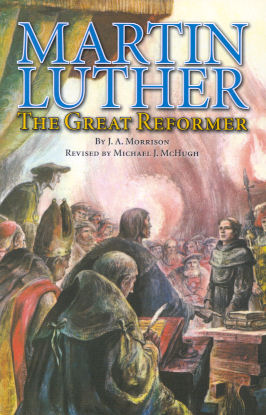
This book is an excellent overview of the very fascinating and inspiring life of Martin Luther. It is intended for teenagers and young adults, but is very useful for adults who want an easy-to-read and easy-to-understand description of this adventurous monk within the Catholic Church of sixteenth-century Europe.
I found this book as I was searching for one on Luther to have my confirmation students read as part of our discussion on the Lutheran church. I have used it for two years now and have found it to be a very useful educational tool. This 122-page book is divided into 13 chapters of about six to ten pages each. The book is written chronologically with each chapter focusing on one period or aspect of Luther’s life and ministry.
This book also has several features enhancing its readability and appeal to younger audiences. It has a larger font than most books to help with readability. Each chapter has a couple of drawings, pictures, maps, or other graphics related to Luther’s life. I enjoyed seeing Luther’s handwritten copy of the hymn he wrote entitled “A Mighty Fortress Is Our God.” It shows the musical notes, his words in German, and his own signature. Another graphic in the book is “Luther’s seal” designed with the cross of Christ inside rose petals and two outer circles with his initials next to it.
Luther wrote much during his lifetime, and the author of this book does a nice job of inserting several of Luther’s quotes and writing examples within this narrative of Luther’s life. Readers are rewarded with a paragraph from Luther’s reflections on the strict discipline he endured at a school he attended in Magdeburg when he was 14 years old. Later in the book, there is a vivid description by Luther on his trip to Rome. And I found it very interesting to see the letter that Luther wrote his friend George Spalatin concerning nine fugitive nuns who went to Luther to help them find a home, work, or a husband. In his letter, Luther gives their names and reveals his thoughts and questions concerning their situation.
There are two other features that readers will appreciate. First, at the beginning of the book, the “Five Solas” are listed and described in a one-page summary. These are titled as “The Rallying Cry of the Great Reformers”: Grace alone, Faith alone, Christ alone, The Scriptures alone, and The Glory of God alone. At the end of the book, there is a 20-page appendix that has Luther’s “Preface to the Letter of St. Paul to the Romans.” This is one of Luther’s clearest writings on justification by faith in Christ and a good summary statement for students and young adults to study.
I recommend this book to others, and my confirmation students also gave positive comments on it. I plan to include this book in my resources for new members, which can be especially helpful for those with little or no previous knowledge of Martin Luther and the Protestant Reformation.
Pr. Craig Benson
Amazing Grace Free Lutheran and St. Peter Lutheran
Armour, SD
Order your copy here: Ambassador Publications Online Store
Also Available:
November 22, 2017
Martin Luther's Christmas Book and Martin Luther's Easter Book
Review by Janelle Mellgren
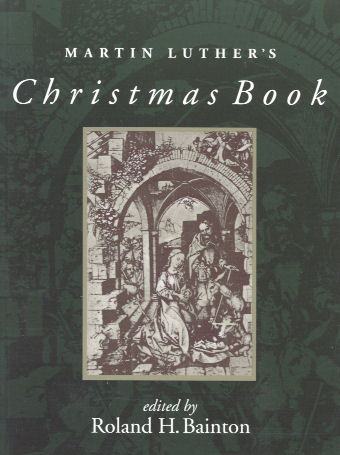
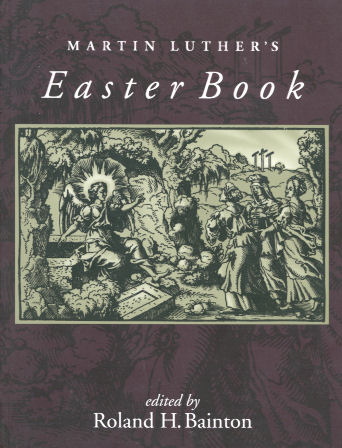
Martin Luther's Christmas Book edited by Roland H. Bainton is a brief, readable collection of some of Luther's thinking on Christmas and the meaning it holds for believers. Bainton has culled excerpts from approximately 30 years’ worth of Luther's sermons and has organized them in a somewhat sequential manner representing the progression of God coming to earth as man.
While you might expect this book to be heavy, it is instead full of the depth of beauty present for all people in the planned and purposeful act of God sending the Redeemer of the World through a young and lowly virgin, celebrated not by the leading religious people of Jesus' time but by the most common and foreign.
Through the thoughtful choosing and layout of editor Roland Bainton, we hear a gentler voice than perhaps we customarily associate with Luther, reminding us of the profound simplicity of the Gospel for all men.
“I would not have you contemplate the deity of Christ, but rather his flesh. Look upon the baby Jesus. Divinity may terrify man. Inexpressible majesty will crush him. That is why Christ took on our humanity, save for sin, that he should not terrify us but rather that with love and favor he should console and confirm”( p.33).
As you contemplate the beauty behind the Nativity this season, Bainton's book may well help you strip away some of the more familiar aspects and dwell more deeply upon the deep and abiding love expressed by our God to all people as He orchestrated the arrival of our Deliverer.
Roland H. Bainton has also edited a collection of Luther’s writings in Martin Lutherʼs Easter Book. In his introduction, Bainton asserts that “in order to be widely read in our day, he [Martin Luther] will have to be excerpted.” What follows is an accessible and well-organized presentation of some of Lutherʼs sermons and lectures on the Gospels, translated by Bainton.
The excerpts are organized around the central themes of Easter, the journey to Jerusalem, Lordʼs Supper, and the arrest, trial, crucifixion, and resurrection of Jesus. Passages of Scripture tied to Lutherʼs lectures and sermons are interwoven throughout the excerpts and serve to highlight his conviction of the importance of the Gospel to the Christian.
Baintonʼs presentation allows the reader to focus on phrases that highlight foundational teachings of the Lutheran faith. It makes accessible the simplicity and complexity of the Gospel as seen through Lutherʼs eyes. While the sheer volume of Lutherʼs writings may seem too much to tackle, Bainton, through Martin Lutherʼs Easter Book, gives any reader the opportunity to access his words.
I think this would gratify Luther in that it makes explanation of the Gospel and Christʼs work on the cross easily available to all. More people may have the opportunity to know that through His death and resurrection, “all that was of the old Adam and the law was dead and done away. Now that I no longer see an angry judge, but that God has given his Son for me, I behold upon the cross the fiery, fatherly love of God” (p.79).
Janelle Mellgren
AFLBS Alumnus
Bloomington, MN
Order your copy of Martin Luther’s Christmas Book here: Ambassador Publications Online Store
Order your copy of Martin Luther’s Easter Book here: Ambassador Publications Online Store
Also Available:
November 29, 2017
The Barber Who Wanted To Pray
Review by Pr. Lee Hoops
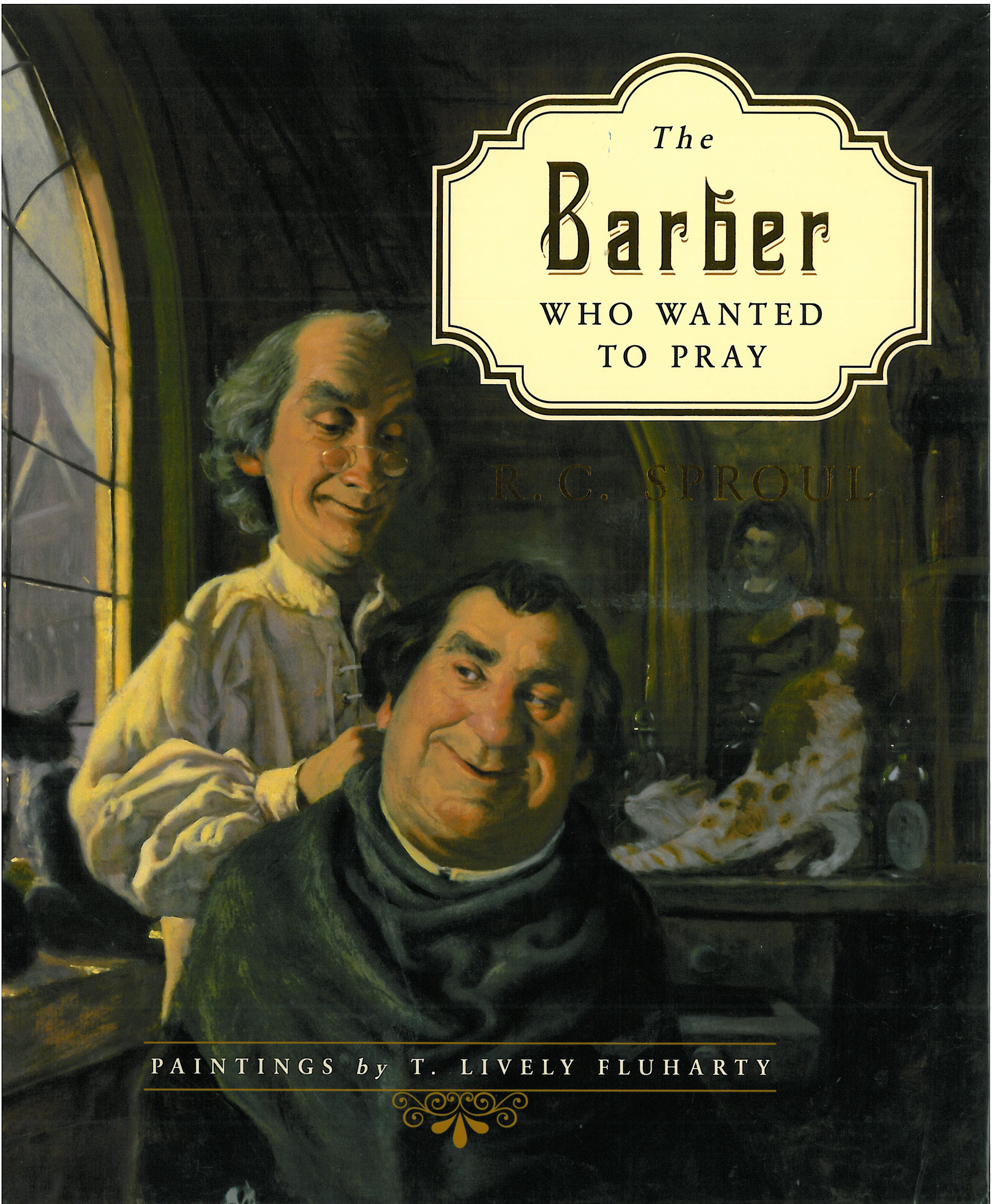
“The family that prays together stays together.” “Prayer changes things.” These are prayer truths we decorate our homes with, prayer truths we occasionally quote for Christian encouragement.
The Barber Who Wanted To Pray, a children’s book, begins mysteriously as the local barber anxiously watches a wanted criminal come into his shop—a plot sure to draw the reader and those listening. The book ends with several effective methods meant to “grow” the Christian’s desire to pray (“pray without ceasing,” I Thessalonians 5:17 directs).
Providing no more details, this short children’s book, available through the AFLC’s Ambassador Publications, really could become your child’s favorite. Proof of God’s amazing grace, the privilege of prayer is ours. This book is a wonderful tool parents and grandparents may use to audibly confirm their praying commitment to those who watch and listen! May those who come behind us find us faithful in prayer!
“For what great nation is there that has a god so near to it as is the Lord our God whenever we call on Him?” (Deuteronomy 4:7)
It was Martin Luther who said, “To be a Christian without prayer is no more possible than to be alive without breathing.”
I heartily recommend The Barber Who Wanted to Pray, a children’s book that challenged me to consider my prayer life. “No man is greater than his prayer life” (Leonard Ravenhill).
Pr. Lee Hoops
Grace Free Lutheran Church
Maple Grove, MN
Order your copy here: Ambassador Publications Online Store
Also Available:















